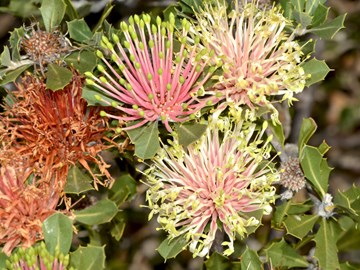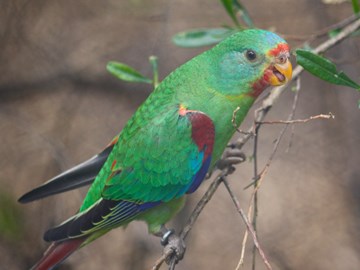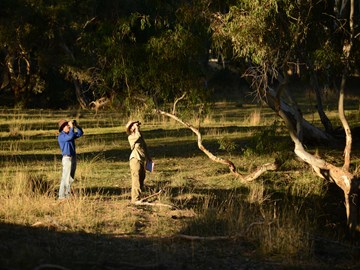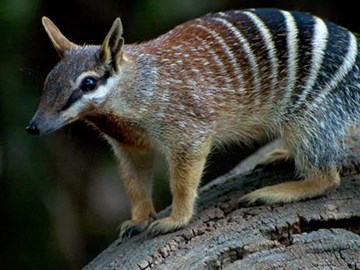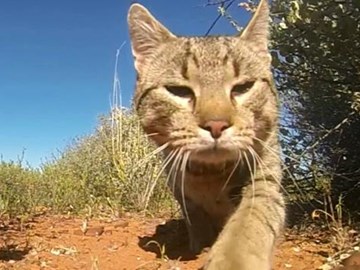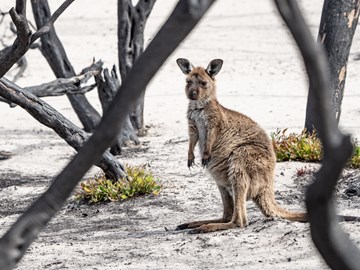Research overview
The Threatened Species Recovery Hub brought together leading ecological experts to work on the outlook for Australia’s threatened species and ecological communities by:
- Developing better, more efficient responses to threats
- Testing novel strategies for rescuing species on the brink
- Developing strategies to provide an early warning about extinction risk
- Ensuring the best tools and most up-to-date information to monitor conservation status
- Involving communities in threatened species conservation and sharing the benefits of healthy ecosystems
- Synthesising and building on research for greater impact
- Supporting post bushfire recovery.
Researchers worked across key themes to inform and support on-ground responses that reduce threats and promote recovery of threatened species; and build a better understanding of their status, threats and management options. As threats and trends emerged, such as the catastrophic Black Summer Bushfires the hub responded to fill urgent needs for evidence and management options.
Research Themes
Taking the threat out of threatened species
Theme 1.0Identifying and effectively controlling the key threats being faced by species close to extinction is crucial to their conservation. General principles will be developed and tested to reduce the impacts of threats based on research at carefully chosen sites around Australia.
Red Hot Red List: no surprises, no regrets
Theme 2.0Some recent extinctions in Australia have been predicted, yet occurred nonetheless because management responses were enacted too slowly, ineffectively or not at all.
Monitoring and management
Theme 3.0Improved monitoring and management of threatened species and threatened ecosystems, including the effectiveness of interventions, is essential to learn what conservation actions work best.
Reintroductions and refugia
Theme 4.0Species close to extinction require special effort in the hope that new opportunities to deal with threats in the wild may emerge and increase their chances of survival.
Enhancing threatened species policy
Theme 5.0Good policy is central to identifying and protecting threatened species. Streamlined evidence-based policy will improve the prospects for Australia’s threatened species.
Using social and economic opportunities for threatened species recovery
Theme 6.0The social environment is critical to the way threats impinge on species and ecological communities.
There can be little effective public investment in threatened species management without an aware and engaged community.
Synthesising and building on research for greater impact
Theme 7.0Over the past four years, the Threatened Species Recovery Hub has built a wealth of knowledge about where and how to improve the outlook for threatened species. The projects in this theme will synthesise and build on this work, combining findings from multiple projects, themes and even hubs to increase the value and impact of this work in key areas.
Post bushfire recovery support
Theme 8.0The 2019-20 wildfires of eastern and southern Australia were beyond normal. Catalysed by extensive drought and unusually high temperatures, these fires were exceptionally extensive, long-lasting and severe. More than 12 million hectares were burnt over the period August 2019 to March 2020, across forests, heathlands and farmlands from south-eastern Queensland to eastern Victoria, on Kangaroo Island and in south-western Australia.
